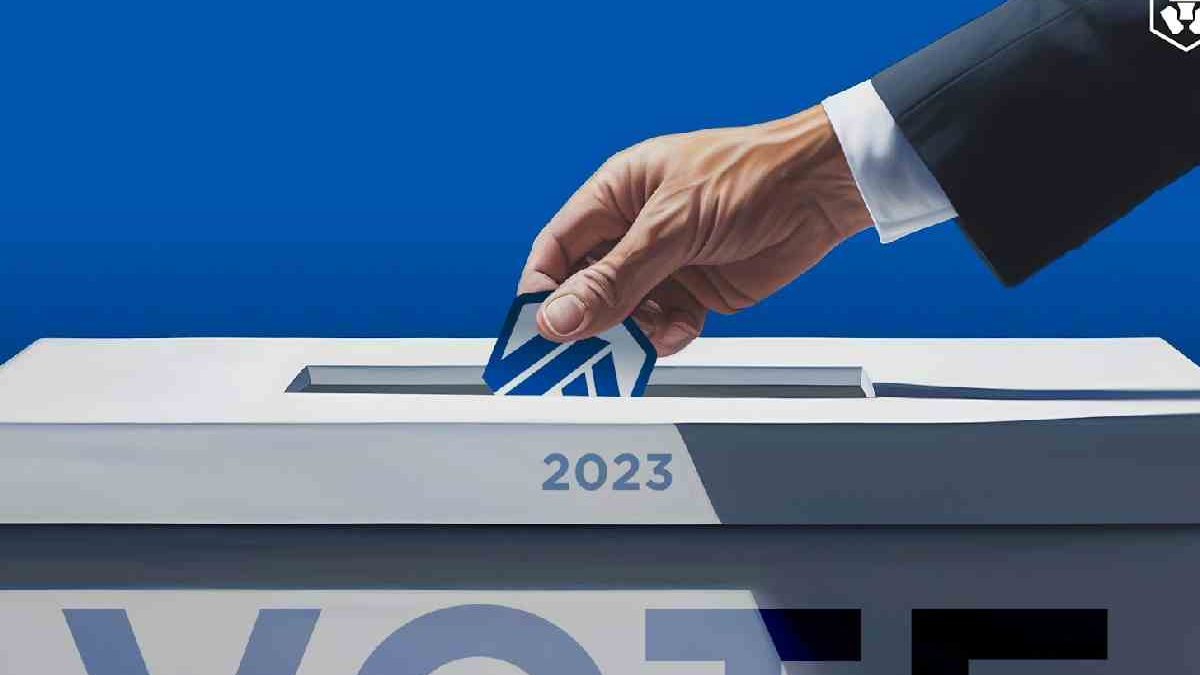Voting and Decision-Making: Ethereum Governance Tokens
Blockchain technology has ushered in a new era of decentralized decision-making, where participants in a network have a say in its evolution. Ethereum, one of the leading blockchain platforms, has introduced governance tokens to enable token holders to participate in crucial decisions that shape the network’s future. This article delves deep into the world of Ethereum governance tokens, examining their mechanics, challenges, innovations, real-world impact, and future trends. Visit Ethereum Code platform to open up new avenues for investing and discover a world of investment prospects in the financial markets!
Table of Contents
Understanding Ethereum Governance Tokens
Definition and Characteristics
Ethereum governance tokens are cryptographic tokens that grant holders voting rights and decision-making power within the Ethereum ecosystem. These tokens are typically distributed to participants in the network through mechanisms like staking or purchasing. The ownership of governance tokens provides individuals with a stake in the platform’s governance.
Role in Blockchain Ecosystems
Governance tokens serve as a means to achieve decentralized decision-making in blockchain ecosystems. They enable token holders to participate in discussions, propose changes, and vote on proposals related to network upgrades, parameter adjustments, and other critical decisions. This approach is designed to prevent centralized control and ensure that the community has a voice in shaping the platform’s future.
Historical Context
To better appreciate the significance of Ethereum governance tokens, it’s essential to understand their historical development. Ethereum’s governance mechanisms have evolved, moving from informal discussions and developer-led upgrades to more formalized governance structures.
The Mechanics of Ethereum Governance
Initiating Governance Proposals
Governance proposals can be initiated by various parties, including developers, token holders, or delegates. These proposals may involve changes to the protocol, network parameters, or resource allocation.
Token Holders’ Voting Rights and Responsibilities
Token holders play a pivotal role in Ethereum’s decision-making process. Their voting rights allow them to approve or reject proposals. To participate, token holders must stake or lock up a certain number of tokens, which demonstrates their commitment to the network’s well-being.
Quorum Requirements and Decision Thresholds
To pass a governance proposal, specific quorum requirements, and decision thresholds must be met. Quorums ensure that a sufficient number of token holders are participating in the vote, while decision thresholds determine the level of support needed for a proposal to be approved.
Smart Contracts and On-Chain Governance
Ethereum governance is often facilitated through smart contracts, which automate the voting process and ensure transparency and security. These contracts execute the outcome of governance decisions directly on the blockchain.
Challenges and Controversies
Centralization Concerns
One of the primary challenges in Ethereum governance is the distribution of governance tokens. Concerns have arisen about the concentration of tokens in the hands of a few, potentially leading to centralization and power imbalances.
Voter Apathy and Low Participation Rates
Despite the potential for decentralized decision-making, voter apathy and low participation rates persist. Many token holders choose not to engage in governance, potentially leaving important decisions in the hands of a minority.
Manipulation and Vote-Buying
Decentralized governance systems are not immune to manipulation and vote-buying. Bad actors may attempt to influence decisions by accumulating tokens or colluding with other stakeholders.
Case Studies of Contentious Governance Decisions
Examining past contentious governance decisions, such as the Ethereum Classic and Ethereum hard fork following the DAO hack, sheds light on the challenges and consequences of decentralized governance.
Innovations in Ethereum Governance
Introduction to Quadratic Voting and Quadratic Finance
Innovations like quadratic voting and quadratic finance aim to address some of the limitations of token-weighted voting. These mechanisms aim to provide a more equitable way for participants to express their preferences and allocate resources.
The Emergence of Decentralized Autonomous Organizations (DAOs)
DAOs represent a significant innovation in blockchain governance. They are self-executing, code-based organizations that allow for decentralized decision-making without the need for traditional hierarchical structures.
Token-Weighted vs. Identity-Weighted Voting Systems
The debate between token-weighted and identity-weighted voting systems continues to shape the future of governance. Identity-weighted systems consider factors beyond token ownership, such as reputation or expertise, when determining voting power.
Governance Token Ecosystems Beyond Ethereum
Ethereum governance tokens have inspired similar systems on other blockchain platforms, leading to a broader ecosystem of decentralized decision-making.
Real-World Impact of Governance Decisions
Case Studies of Successful Governance Decisions
Highlighting examples where Ethereum’s decentralized governance has worked effectively, such as the transition to Ethereum 2.0, demonstrates the positive impact of community-driven decision-making.
Governance Decisions and Protocol Upgrades
Governance decisions have a direct impact on the development and upgrade of the Ethereum protocol, influencing factors like scalability, security, and functionality.
Market Reactions and Investor Sentiment
The outcomes of governance decisions can significantly affect investor sentiment and market dynamics, showcasing the real-world consequences of decentralized governance.
Future Trends and Challenges
The Role of Ethereum 2.0 in Governance
Ethereum 2.0 introduces changes to the network’s architecture that may have implications for governance. Exploring how these changes interact with Ethereum’s governance mechanisms is crucial.
Interoperability Between Different Blockchain Governance Systems
As blockchain networks become more interconnected, the challenge of interoperability between different governance systems arises. This section explores the potential for cross-chain governance and its challenges.
Regulatory Challenges and Legal Implications
The evolving landscape of blockchain governance raises questions about regulatory compliance and legal responsibilities. Understanding the legal framework surrounding decentralized governance is essential.
The Potential for Cross-Chain Governance
Exploring the concept of cross-chain governance, where decisions on one blockchain can impact another, provides insight into the evolving nature of blockchain ecosystems.
Conclusion
In summary, Ethereum governance tokens serve a pivotal function by streamlining interactions within the Ethereum network. They are positioned at the forefront of decentralized decision-making within the blockchain sphere. As Ethereum and other blockchain platforms progress and adapt, these governance tokens will continue to exert substantial influence, actively shaping the trajectories of these technologies. Through the proactive resolution of challenges, the enthusiastic embrace of innovations, and the facilitation of wider community involvement, the blockchain community can actively ensure that governance tokens uphold their commitment to fostering inclusive and transparent decision-making processes. Staying well-informed, actively participating in discussions, and becoming an integral part of the exhilarating journey of blockchain governance is essential.
Related posts
Sidebar
Recent Posts
The Best Forex Brokers for Beginners
Since COVID-19 first popped up, interest in the forex market has increased dramatically. Knowing how to get involved with minimal…
Maximizing Success: The Symbiosis of Dedicated Software Development Teams and Product Design Services
The Symbiosis of Dedicated Software Development Teams and Product Design Services In the rapidly evolving landscape of technology, businesses aiming…



